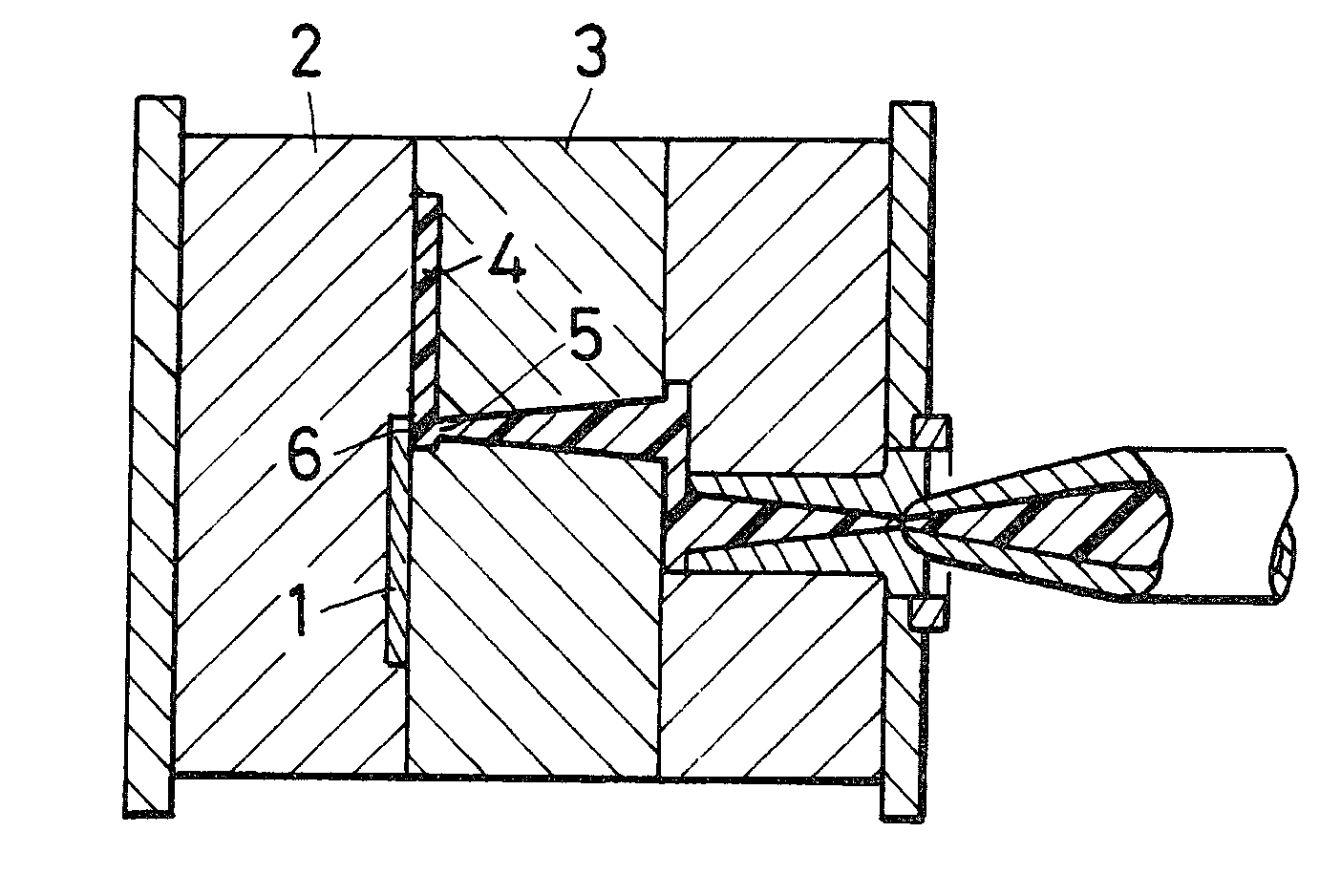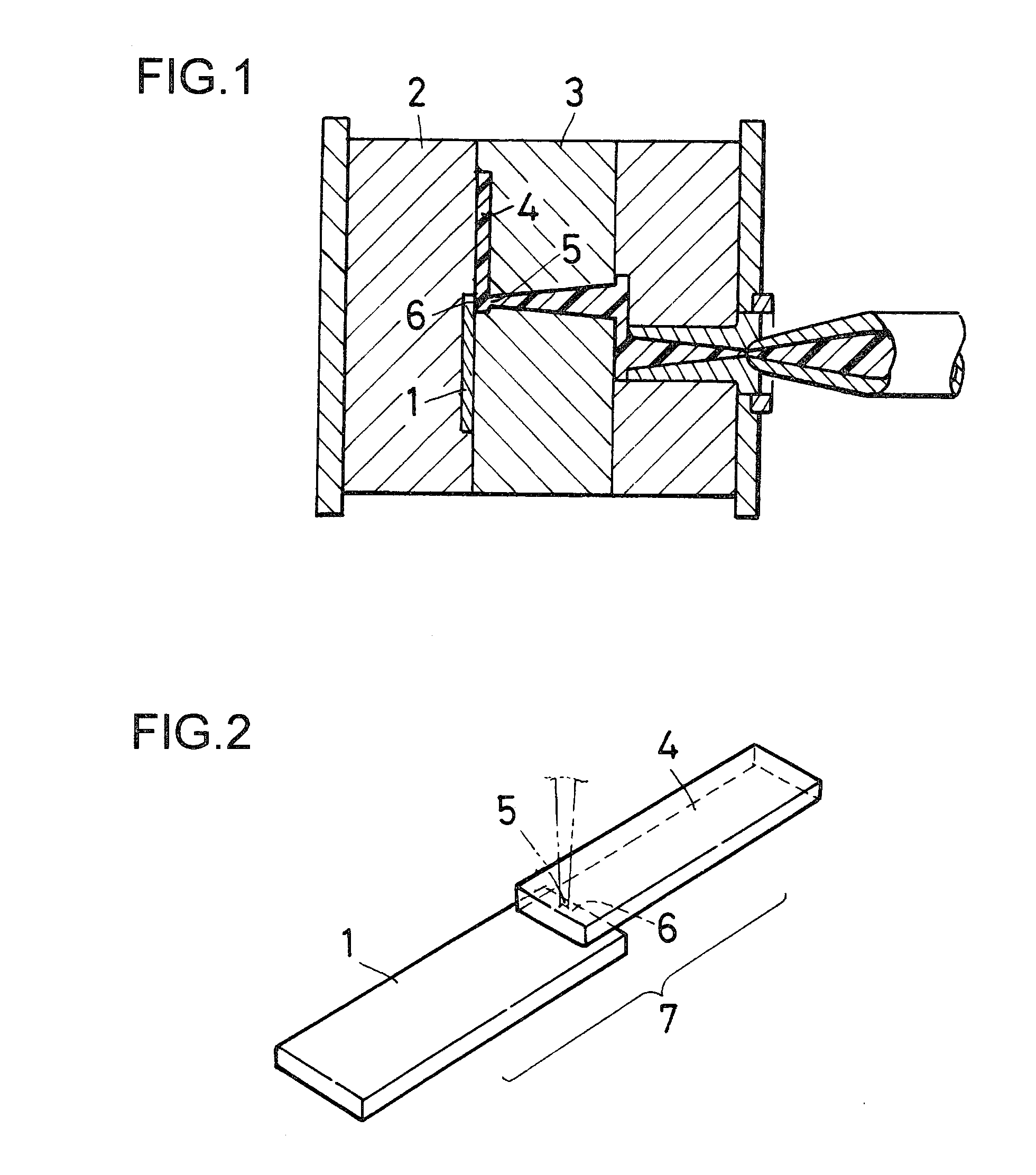Composite of aluminum alloy and resin and manufacturing method thereof
a technology of composite materials and aluminum alloys, applied in the direction of synthetic resin layered products, metal layered products, construction, etc., can solve the problem of further increasing the strength between the resin portion and the aluminum alloy portion, and achieve the effect of strong bonding strength and high productivity
- Summary
- Abstract
- Description
- Claims
- Application Information
AI Technical Summary
Benefits of technology
Problems solved by technology
Method used
Image
Examples
reference example 1
Method for Manufacturing a Copolymerized Polyamide (Block Polymer)
[0121]Raw materials such as an equimolar salt of an acid and a diamine as the raw material of a copolymerized polyamide were charged, to respective mass ratios, in a reactor. Pure water was added in an equivalent amount to the total amount of charged resin component, and then the polymerization tank was purged with N2, after which heating was started, under stirring, to let the reaction proceed while adjusting the tank pressure to a maximum 20 kg / cm2, to an end-point temperature of 270° C. The polymer discharged into a water bath was pelletized with a strand cutter. The obtained pellets were treated for 20 hours in hot water at 95° C., and the unreacted monomers and low polymers were extracted and removed. After extraction, the pellets were dried for no fewer than 50 hours at 80° C.
reference example 2
Viscosity Number Measurement Method
[0122]The viscosity number was measured in 96% sulfuric acid in accordance with the ISO 307 standard.
example 1
[0123]A commercially available A5052 aluminum alloy plate having a thickness of 1.6 mm was purchased and was cut into 18 mm×45 mm rectangular pieces. Holes of 2 mm φ were opened at the ends of the aluminum alloy pieces using a press. A copper wire covered with vinyl chloride resin was prepared. The copper wire was threaded through the holes of 10 alloy pieces, and the middle was bent in such a manner that the 10 alloy pieces were suspended without sticking or coming into contact with one another. A bath comprising 15% of an aluminum degreasing agent (NE-6 by Meltex Inc., Tokyo, Japan) was prepared, to a solution temperature of 75° C. The alloy pieces were dipped in this degreasing agent aqueous solution for 5 minutes, and were then washed with water. In another bath there was prepared next an aqueous solution of 1% hydrochloric acid, to a solution temperature of 40° C. The aluminum alloy pieces were dipped in this bath for 1 minute, followed by washing with water.
[0124]In another ba...
PUM
| Property | Measurement | Unit |
|---|---|---|
| Percent by mass | aaaaa | aaaaa |
| Percent by mass | aaaaa | aaaaa |
| Diameter | aaaaa | aaaaa |
Abstract
Description
Claims
Application Information
 Login to View More
Login to View More - R&D
- Intellectual Property
- Life Sciences
- Materials
- Tech Scout
- Unparalleled Data Quality
- Higher Quality Content
- 60% Fewer Hallucinations
Browse by: Latest US Patents, China's latest patents, Technical Efficacy Thesaurus, Application Domain, Technology Topic, Popular Technical Reports.
© 2025 PatSnap. All rights reserved.Legal|Privacy policy|Modern Slavery Act Transparency Statement|Sitemap|About US| Contact US: help@patsnap.com


